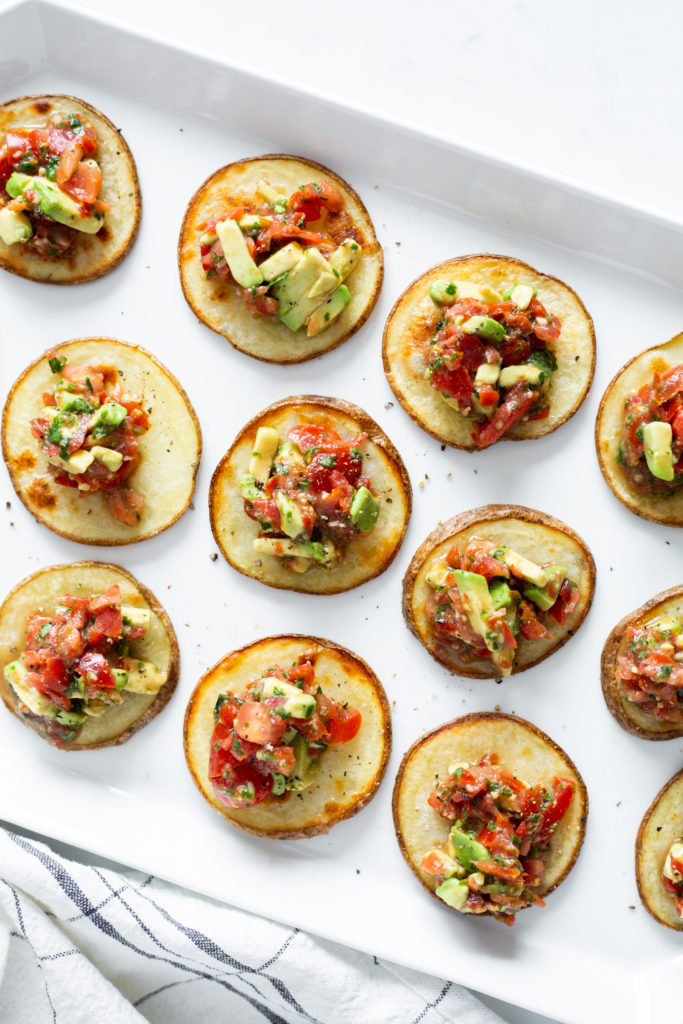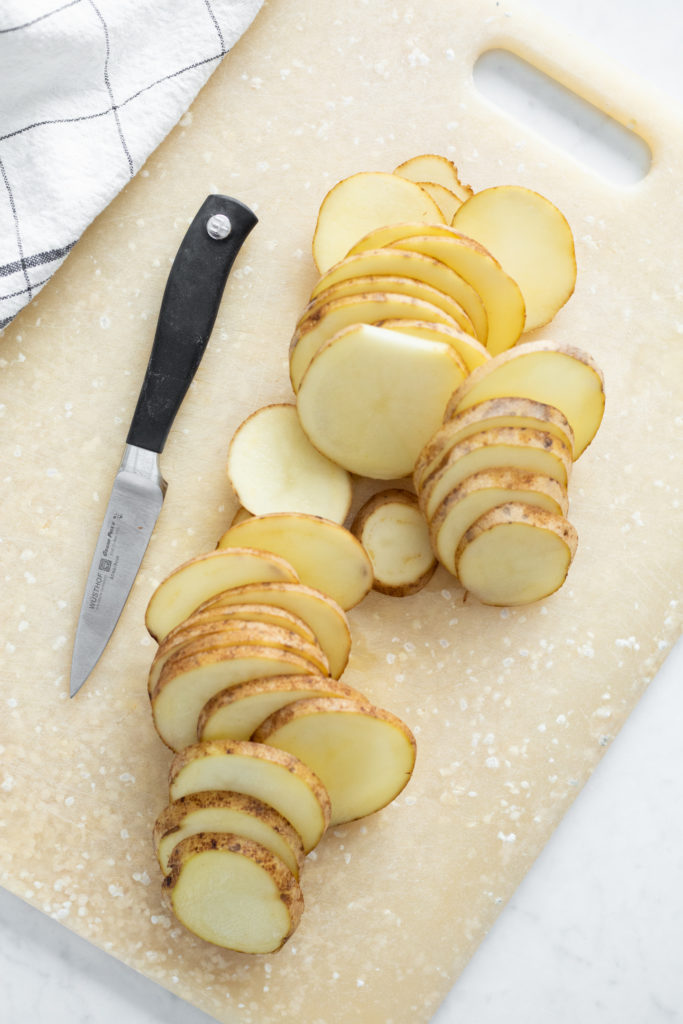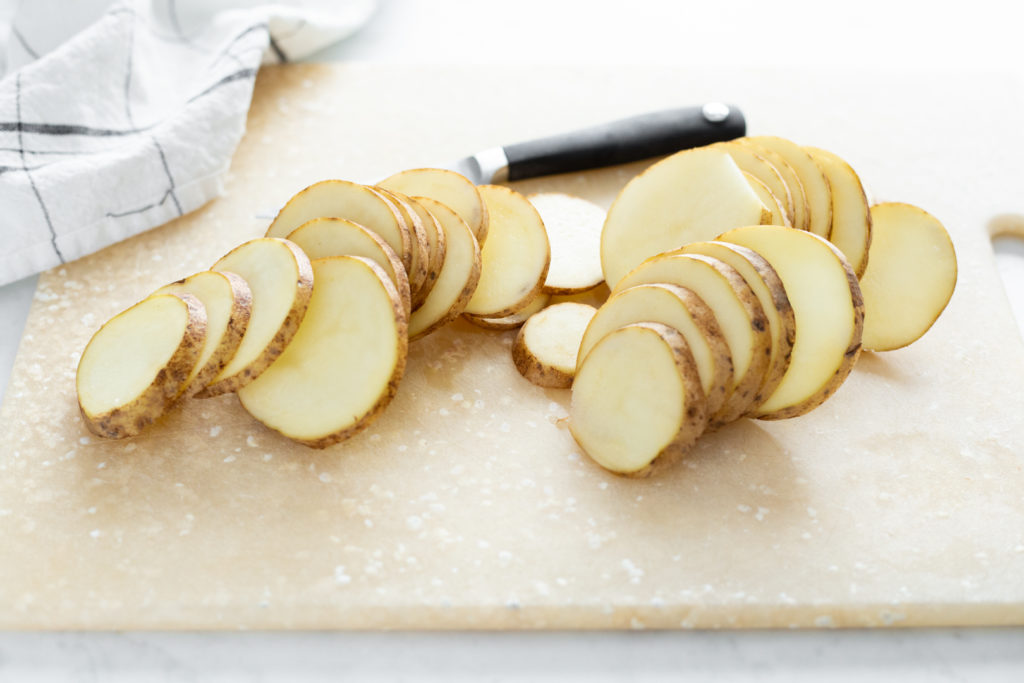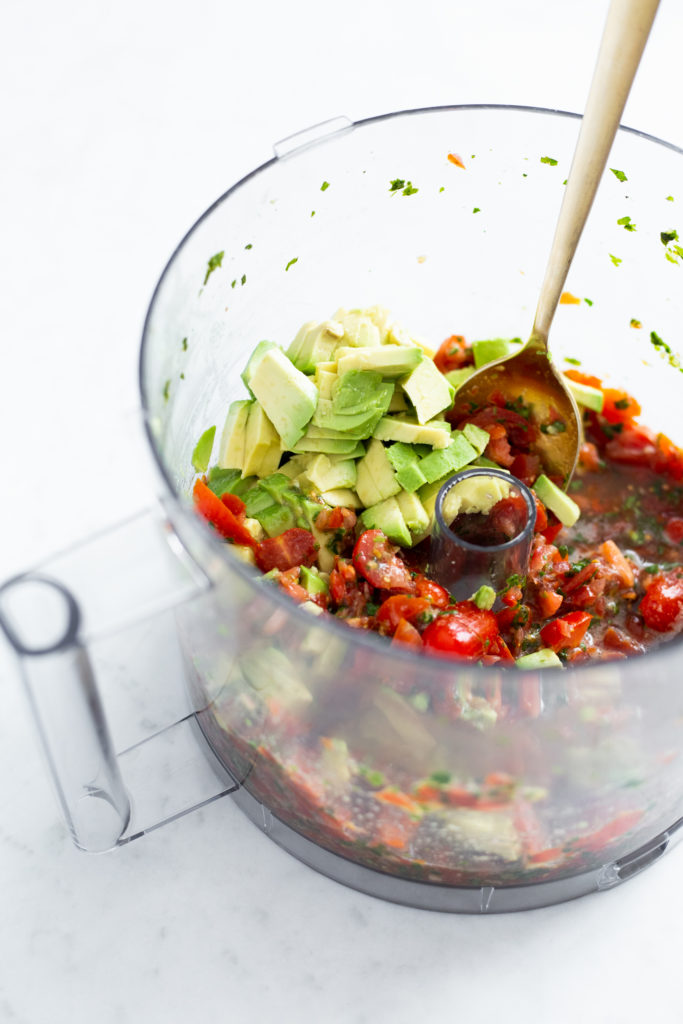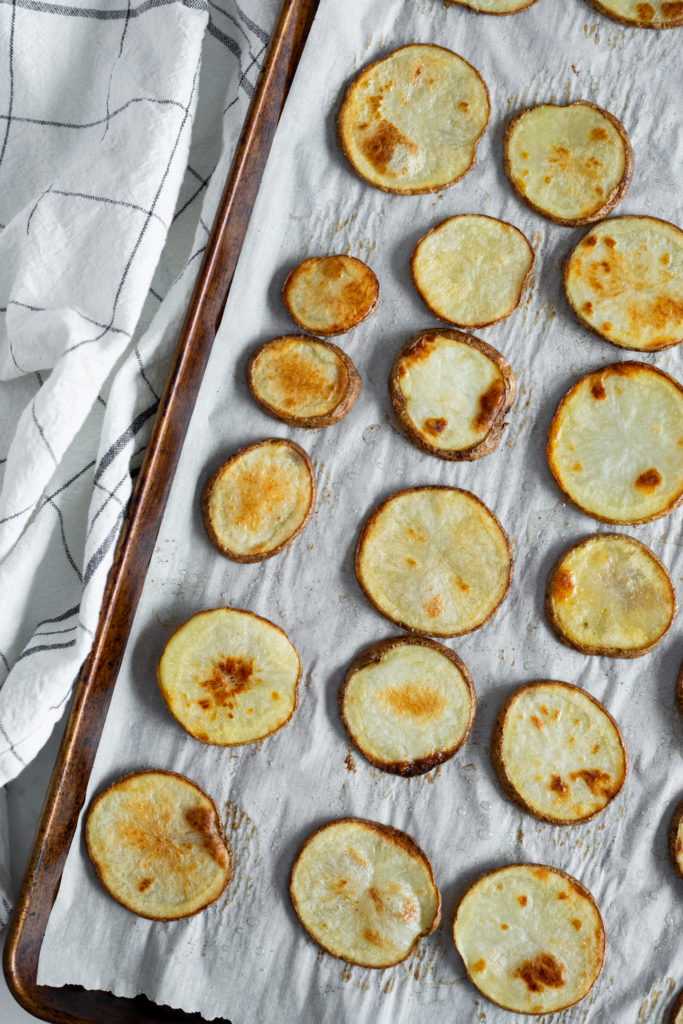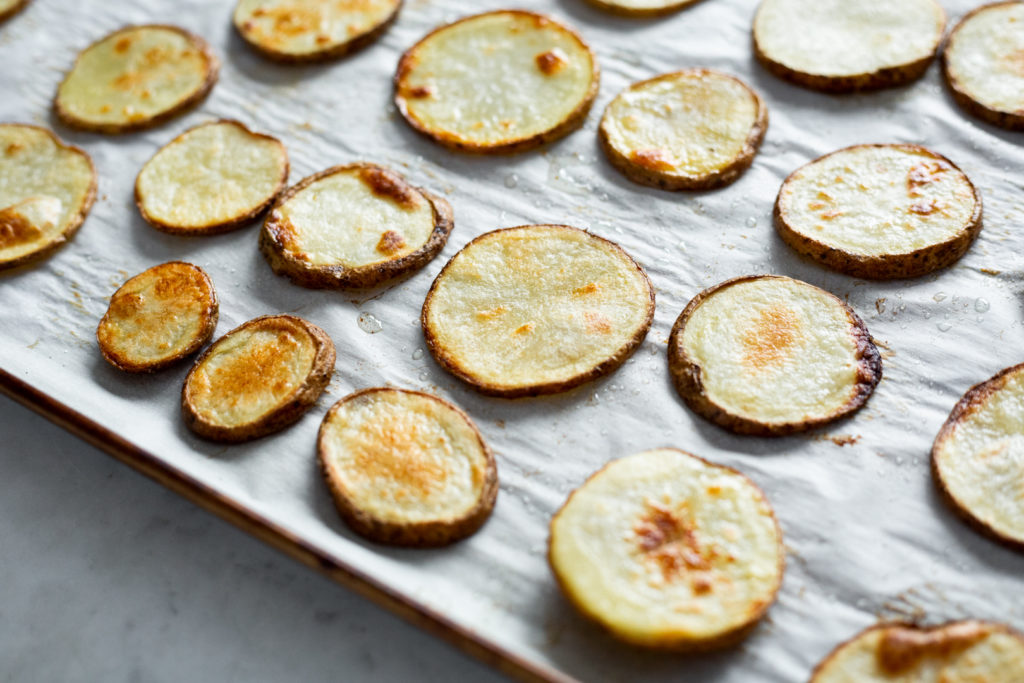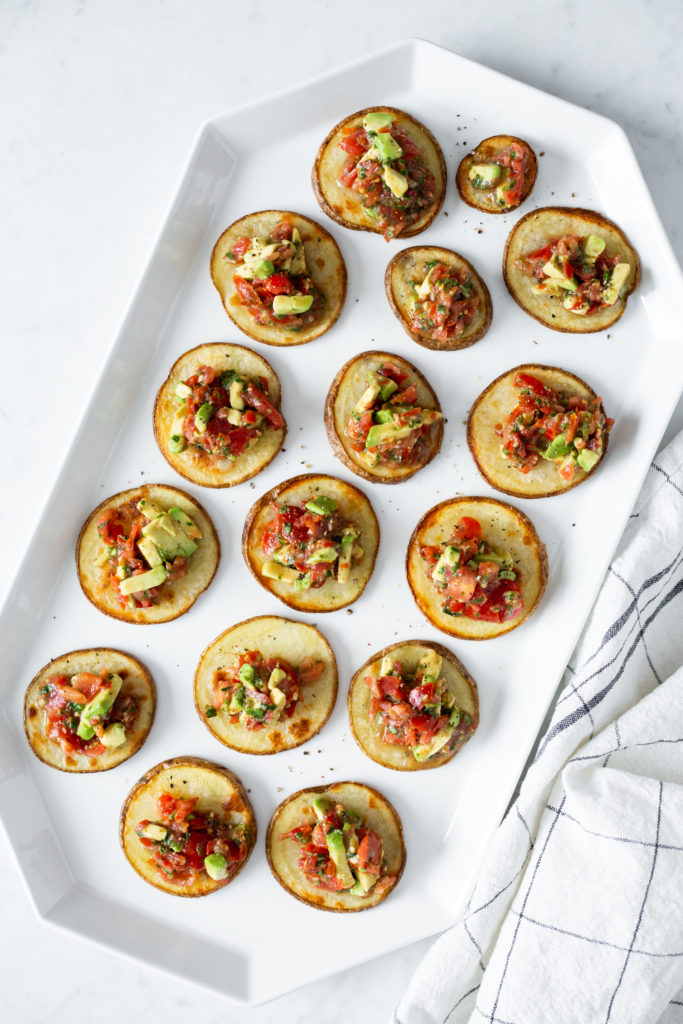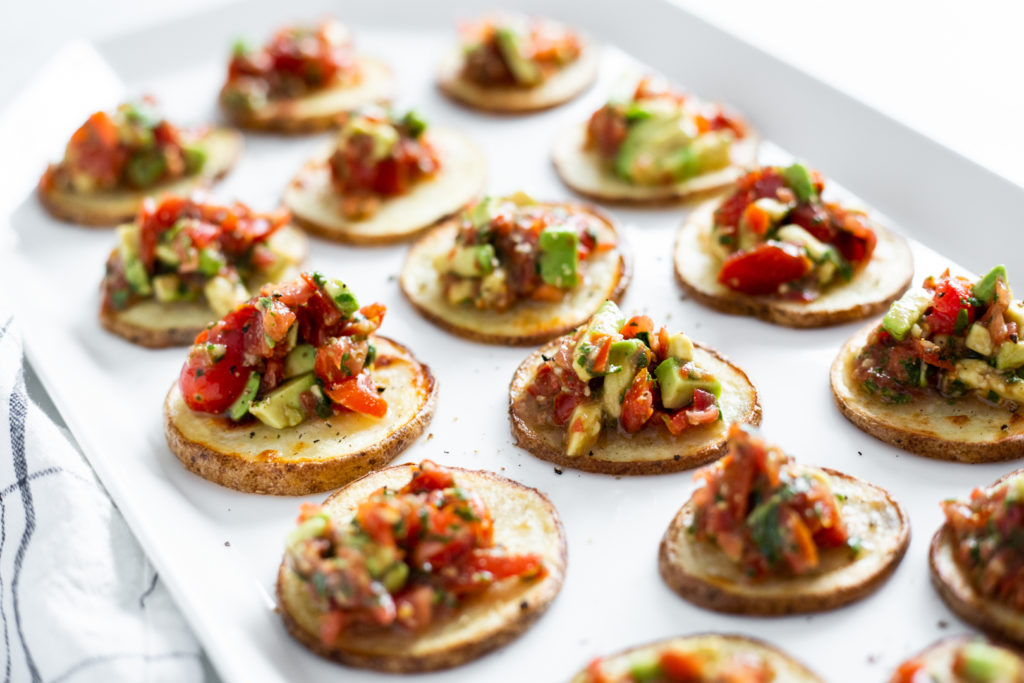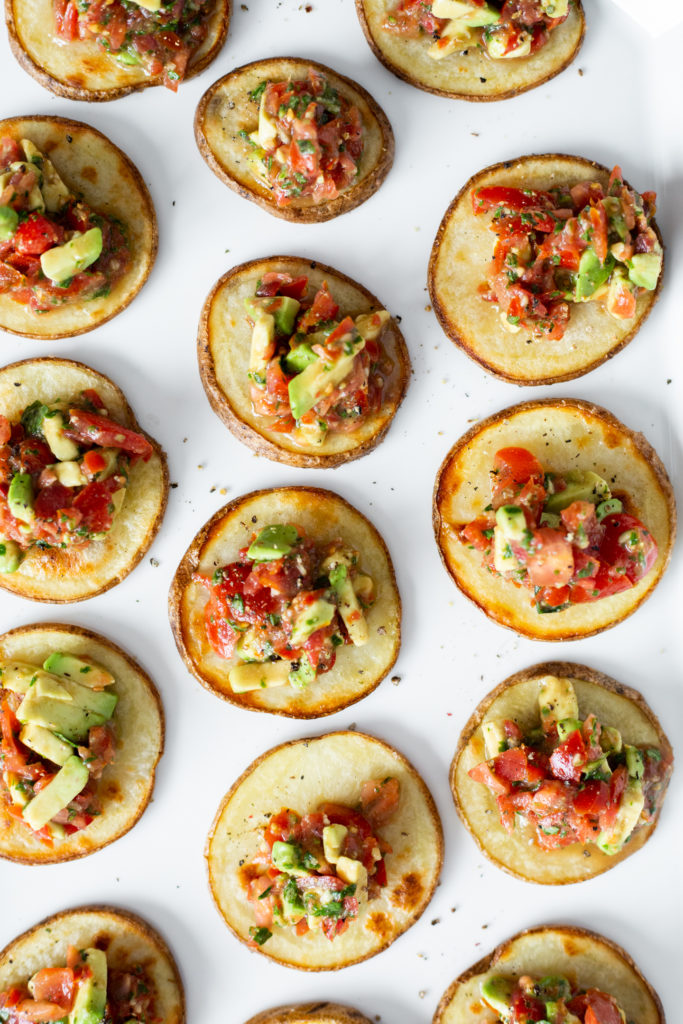
Over-the-counter medicines are a lucrative business for the pharmaceutical industry. Americans make 2.9 billion trips to pharmacies to purchase over-the-counter (OTC) drugs every year, spending a whopping $34.3 billion dollars! (1, 2)
While most OTC drugs have long been considered relatively harmless, recent research suggests otherwise; in many cases, the long-term consequences of taking OTC drugs were inadequately explored before their release on the market, and we are only now beginning to understand their numerous adverse effects. Read on to learn about the health risks of common OTC meds, including ibuprofen, aspirin, acetaminophen, decongestants, antacids, and antihistamines, and discover safe alternatives to these drugs.
Short on time? Use these links to skip ahead!
Why Over-the-Counter Drugs Are Not as Safe as We’ve Been Led to Believe
The public perception of over-the-counter medications is that they must be safe, since they are purchased without a prescription, and frequently without any advice or restrictions. However, a growing body of research shows that OTC drugs are anything but harmless. Ibuprofen, aspirin, acetaminophen, decongestants, and antacids make up most of the OTC drug market and, unfortunately, our overuse of these products is damaging our health.
Back to Top
The Truth about Ibuprofen
Non-steroidal anti-inflammatory drugs, or NSAIDs, are among the most commonly used drugs worldwide, with 70 million prescriptions and 30 billion over-the-counter doses sold annually in the United States. (3)
Ibuprofen’s popularity belies its high potential for adverse effects, including cardiovascular, gastrointestinal, hepatic, kidney, and neonatal health complications.
It Carries Cardiovascular Risks
The cardiovascular risks of NSAIDs, including ibuprofen, were first identified decades ago. (4) Inexplicably, this information has remained mostly undisclosed to the public, causing millions of people to take a drug that could potentially compromise their heart health. In recent years, several studies have finally grabbed the attention of the medical community; in 2017, a study published in the European Heart Journal – Cardiovascular Pharmacotherapy associated ibuprofen consumption with a 31 percent increased risk of cardiac arrest, while several others linked the drug to non-fatal myocardial infarction, congestive heart failure, and high blood pressure. (5, 6, 7)
Ibuprofen and other NSAIDs inhibit cyclooxygenase, an enzyme that produces inflammatory mediators, called prostanoids, from arachidonic acid. While NSAIDs inhibit the production of inflammatory, pain-inducing prostanoids, they also inhibit beneficial prostanoids that promote vasodilation (which helps reduce blood pressure); inhibit platelet aggregation (necessary for the blood to clot); and maintain a healthy vascular system. The reduction of beneficial cardioprotective prostanoids explains the increased risk of cardiovascular complications observed with ibuprofen use.
It May Cause Gastrointestinal Problems
The gastrointestinal complications of NSAIDs are also well recognized. Ibuprofen harms the gastrointestinal (GI) tract by reducing beneficial prostanoids that maintain the integrity of gastric tissue and the intestinal barrier. GI complications are exceedingly common; 60 to 70 percent of individuals who take NSAIDs long term develop intestinal inflammation, increased intestinal permeability, mucosal damage, gastric ulcers, diverticulitis, blood loss and anemia, and nutrient malabsorption. (8) Ibuprofen also alters the gut microbiota. (9, 10, 11) Furthermore, by damaging the intestinal barrier, ibuprofen allows for the transfer of inflammatory bacteria from the intestine to the liver, causing liver inflammation and promoting the development of nonalcoholic fatty liver disease. (12)
Ibuprofen Could Harm the Liver, Kidneys, and Immune Function
Ibuprofen damages the liver and raises levels of the enzymes AST, ALT, ALF, and bilirubin. (These are the primary markers in liver function testing.) Researchers are still trying to understand precisely how ibuprofen causes damage to the liver, but it could be, in part, an immune reaction to the drug or the body’s response to toxic byproducts produced when it attempts to metabolize ibuprofen. (13)
Ibuprofen damages the kidneys and interferes with immune function. The drug reduces glomerular filtration, the process by which the kidneys filter excess fluid and waste products into the urine, thereby straining the kidneys. Ibuprofen also impairs the immune response, suppressing the body’s ability to target and eradicate viral infection. (14)
It Carries Prenatal Risks, Too
In recent years, an alarming body of evidence has accumulated indicating that prenatal use of ibuprofen increases the risk of fetal and infant health problems. Using ibuprofen during pregnancy is associated with decreased birth weight, an increased risk of cerebral palsy, and altered fetal testis development. (15, 16, 17) Ibuprofen may induce these effects in a developing fetus by interacting with maternal hormones, inducing brain oxidative stress, stimulating endocannabinoid receptors in the nervous system, and inhibiting sulfation, a crucial biochemical pathway involved in detoxification.
Back to Top
Why Aspirin Isn’t as Beneficial as You May Think
Public health authorities have long recommended low-dose aspirin therapy (taking a daily “baby aspirin” dose of 81 mg) for the prevention of cardiovascular disease. (18) However, recent research has cast serious doubt on the validity of this practice. A large NIH-funded study published in 2018 found that aspirin use has no beneficial effects on “healthy lifespan,” classified as life free of dementia or persistent physical disability, in older adults. (19)
In other words, regular aspirin use has no benefits for healthy adults. Aspirin may only exert protective effects in people with pre-existing cardiovascular conditions.
Furthermore, the supposed benefits of aspirin in at-risk individuals must be weighed against the established health risks of the drug, including an increased risk of GI bleeding, hemorrhagic stroke, and brain bleeding. (20, 21)
The problematic effects of aspirin aren’t limited to adults; prenatal aspirin use is associated with an increased risk of fetal testicular dysfunction and cerebral palsy. (22, 23) The mechanisms by which aspirin induces these effects are similar to those noted with ibuprofen; aspirin alters maternal hormone production, causes oxidative stress, and inappropriately stimulates the endocannabinoid system, a biological system that plays a pivotal role in the development and function of the brain.
Back to Top
Acetaminophen: Dangerous for Children—And Adults
Acetaminophen is an OTC analgesic consumed in the United States in massive quantities. Each week, approximately 23 percent of American adults pop an acetaminophen-containing medicine. (24) Unfortunately, few understand how harmful this common pain-relief drug may be.
If you’re planning on parenthood, take note: The effects of prenatal acetaminophen use by women and men on the health of their children are of special concern.
- When women take acetaminophen before becoming pregnant or during pregnancy, they may significantly increase their baby's risk of developing childhood asthma, ADHD, autism, a reduced IQ, behavioral problems, language delay, impaired executive function, and cerebral palsy. (25, 26, 27, 28, 29) (In animal studies, female mice exposed to acetaminophen/paracetamol gave birth to female offspring with dysfunctional reproductive systems.) (30)
- Paternal preconception acetaminophen use for eight or more days is also associated with ADHD in children. (31) Acetaminophen increases the risk of these conditions by decreasing glutathione, the body’s master antioxidant, thus leaving the fetal respiratory system and brain vulnerable to oxidative stress.
- Acetaminophen use during early childhood may also be harmful. The use of acetaminophen in babies between the ages of 12 and 18 months increases the risk of autism spectrum disorder eight-fold. (32) In adults, acetaminophen may blunt emotions and empathy, indicating that it has adverse neurobehavioral effects well beyond pregnancy and childhood. (33, 34)
Acetaminophen is also toxic to the liver and kidneys. Over half of all acute liver failure cases are caused by acetaminophen overdose. (35, 36) Acetaminophen causes liver damage by increasing the permeability of the gut, allowing inflammatory bacteria to move from the gut into the liver. (37) The current recommended maximum dose for acetaminophen of 4,000 mg per day is capable of inducing liver damage, as indicated by elevations in the liver enzyme ALT, after just four days. (38) Last but not least, acetaminophen increases the risk of kidney and blood cancers. (39, 40) While the mechanism is not well understood, a potential explanation is that acetaminophen is a metabolite of phenacetin, a known (and now banned) carcinogen.
Back to Top
Decongestants Can Have Serious Cardiovascular Side Effects
The active ingredient in most decongestants is pseudoephedrine. Pseudoephedrine stimulates alpha-adrenergic receptors, which activate the sympathetic nervous system, increase heart rate, and raise blood pressure. When taken by individuals with undiagnosed hypertension, decongestants can cause hypertensive emergencies. (41, 42) To put this in perspective, 75 million Americans have hypertension, and over half of those do not have the condition under control or are undiagnosed. While decongestants list potential risks on the label, few people read the label or heed the advice. Decongestants pose a significant threat to these individuals, despite their OTC availability.
Decongestants have also been found to induce urinary problems in males over 50 years of age and can cause insomnia, nervousness, rapid heart rate, heart attack, and heart palpitations. (43) To make matters worse, taking decongestant nasal sprays for longer than just three days can induce a vicious cycle of rebound congestion—essentially, congestion gets worse after you stop taking the decongestant because your nasal passages have become dependent on the drug. This leads many people to continue decongestants indefinitely.
Back to Top
The Many Dangers of Proton Pump Inhibitors
Proton pump inhibitors (PPIs) are among the most widely used OTC drugs for stomach upset, yet they come with a lengthy list of adverse effects. Proton pumps are well known for their role in the stomach, where they facilitate gastric acid production. The intention of taking a PPI is to reduce the activity of gastric proton pumps, thus lowering gastric acid production and alleviating reflux, peptic ulcers, and indigestion. However, few people realize that proton pumps are present in nearly every cell of the body and are essential for cellular energy production.
This means that PPIs don’t just affect the stomach; they also impair the body’s many other proton pumps and produce a wide range of negative physiological effects.
They Can Hurt Your Gut Health
Gastric acid is a component of chyme, the mixture of gastric juices and partially digested food that passes from the stomach to the small intestine. In a person with normal gastric acid production, chyme regulates the acidity of the upper small intestine, preventing bacteria from overreaching their bounds. By inhibiting gastric acid production, PPIs reduce the acidity of chyme and allow the number of microbes in the small intestine to rise, causing small intestinal bacterial overgrowth (SIBO). (44, 45) PPIs also change the composition of the gut microbiota, increasing levels of opportunistic pathogens and the risk of serious infections including Clostridium difficile, Campylobacter, and pneumonia. (46, 47, 48) Changes to the gut microbiota induced by PPIs may also raise the risk of chronic liver disease by increasing Enterococcus bacteria, which travel from the gut to the liver and exacerbate alcohol-induced liver disease, nonalcoholic fatty liver disease, and nonalcoholic steatohepatitis. (49)
PPIs Can Lead to Nutrient Deficiencies
In addition to controlling bacterial populations in the small intestine, gastric acid is also required for the absorption of nutrients. Low gastric acid impairs digestion. Accordingly, deficiencies of vitamin B12, magnesium, iron, calcium, and vitamin C are common in users of PPIs. (50) In fact, poor magnesium and calcium absorption is one reason why PPIs may increase the risk of osteoporosis. (51)
They Have Neurological Effects
PPIs have been linked to an increased risk of dementia and Alzheimer’s disease. Use of one PPI, omeprazole, is associated with declines in visual memory, episodic memory, motor and mental response speed, new learning, short-term and long-term attention, information retention, and strategy development. (52) Regular users of PPIs have a 44 percent increased risk of dementia compared to those who don’t use the drugs. (53)
There are several ways PPIs may contribute to neurodegeneration:
- PPIs increase deposits of amyloid-beta plaques. Accumulations of these malformed proteins have been found in the brains of Alzheimer’s patients. PPIs cause this condition by upregulating enzymes that produce amyloid-beta and reducing the activity of protein-degrading lysosomes.
- PPIs interact with tau protein, a component of neurofibrillary tangles. Neurofibrillary tangles accumulate inside neurons and impair neurological function in Alzheimer’s disease.
- PPIs decrease magnesium and vitamin B12 levels. B12 deficiency negatively affects cognition and promotes neurological damage by interfering with DNA synthesis and methylation and promoting homocysteine neurotoxicity. Magnesium deficiency harms cognition by lowering the brain’s defenses against oxidative stress.
- PPIs inhibit proton pump function in neurons. Neuronal proton pumps regulate the release of neurotransmitters; impaired proton pump function alters neurotransmitter release and reuptake. (54)
They Can Hurt Your Heart Health
PPIs are harmful to the cardiovascular system. The use of PPIs after a heart attack is associated with a 30 percent increased risk of cardiovascular death, a subsequent heart attack, or stroke. (55) Use of PPIs is also associated with an increased risk of stroke and heart failure. (56, 57) PPIs induce cardiovascular dysfunction by reducing nitric oxide, which promotes the dilation of blood vessels and improves blood flow, and by increasing ADMA, a metabolic byproduct of arginine metabolism that damages the function of endothelial cells, which line the heart and blood vessels. By reducing levels of vitamin B12 and vitamin C, PPIs also weaken the body’s ability to lower homocysteine and oxidative stress, which are underlying causes of cardiovascular disease.
They Can Lead to an Increased Risk for Serious Illnesses—And Even Death
PPIs increase the risk of chronic kidney disease, gastric cancer, and colon cancer. A shocking 20 to 50 percent increase in risk for chronic kidney disease has been observed with regular use of PPIs. (58) PPIs promote gastric and colon cancer by raising the pH of the stomach, which causes the release of excessive amounts of gastrin, the hormone that causes the stomach to release gastric acid. Hypergastrinemia promotes gastric and colorectal cell hyperplasia, fundic gland polyps, and gastric carcinoids. (59, 60)
Long-term use of PPIs carries an increased risk of death, according to a recent study published in BMJ Open. In the study, the researchers examined the medical records of 275,000 users of PPIs and nearly 75,000 people who took another type of acid-suppressing drug, H2 blockers. They ultimately found that those who took PPIs for one to two years had a 50 percent increased risk of dying over the next five years compared to those on H2 blockers! (61) The increased risk of death is likely due to the neurological, cardiovascular, renal, and carcinogenic effects of prolonged PPI use.
The Issues PPIs Cause Are Long Term
As if the numerous harmful effects of PPIs weren’t enough, these drugs can also cause problems once they’ve been stopped. PPIs elevate the pH of the stomach, stimulating cells (known as parietal cells) to make more of the hormone gastrin. Elevated gastrin causes the stomach to produce more proton pumps and larger amounts of stomach acid. When PPIs are removed, the increased quantity of proton pumps and gastric acid can result in worse reflux than before the PPI, a condition referred to as “rebound reflux.” Rebound reflux promotes a hard-to-break cycle in which removal of the PPI worsens reflux, causing the affected individual to reach for PPIs again and again. However, the good news is that parietal cells are continually undergoing renewal, as healthy cells replace old ones, so former PPI users are not necessarily destined for rebound reflux forever.
Finally, there is evidence that the adverse effects of PPIs can pass from mothers to children. Use of PPIs during pregnancy may increase the risk of asthma in children by interfering with maternal digestion of proteins. Impaired maternal protein digestion may increase the number of allergens to which a fetus is exposed. Ultimately, this can cause changes in a developing baby’s immune system that may bring about an increased risk of allergies after birth. (62)
Back to Top
Antihistamines May Impact Your Brain
In 2016, total sales of antihistamines in the United States amounted to a staggering $6.89 billion dollars, making them some of the most popular OTC medications. (63) Unfortunately, antihistamines are not exactly harmless. A recent study found that the use of anticholinergic drugs, a class of drugs under which antihistamines are included, is associated with an increased risk of dementia. (64) Benadryl, one of the most popular antihistamines, has been found in animal studies to impair memory consolidation, the process by which memories are stabilized after their initial acquisition. (65)
Back to Top
Here Are Your Alternatives to OTC Drugs
Clearly, over-the-counter drugs are not as harmless as we’ve been led to believe. Fortunately, there are many safe, natural alternatives to OTC drugs that you can use to relieve pain, protect your heart, reduce congestion and allergies, and alleviate acid reflux and indigestion.
Five Alternatives to Ibuprofen and Acetaminophen
If you’re looking for pain relief, try one of these remedies in place of an OTC pain killer.
1. Boswellia
Boswellia is a resin extracted from the Boswellia serrata tree native to India, the Middle East, and North Africa. In ayurveda, an ancient Indian system of medicine, boswellia is used to treat arthritic pain, reduce inflammation, and quell fevers. Modern science has confirmed the anti-inflammatory, antiarthritic, and analgesic properties of this plant, which mediates these conditions through the inhibition of inflammatory leukotrienes. (66) Boswellia that has been standardized to contain 30 percent AKBA (3-acetyl-11-keto-beta-boswellic acid) is most useful for relieving pain and inflammation and improving joint mobility.
If supplementing with Boswellia serrata resin itself, the therapeutic dosage is typically between 800 and 1,200 mg taken three times per day. Encapsulated boswellia supplements that have been standardized for AKBA content, on the other hand, are taken at much lower doses of around 100 to 250 mg per day. Pregnant women must avoid boswellia because it can promote abortion.
2. Tart Cherry Juice
Tart cherry juice contains high levels of antioxidant and anti-inflammatory compounds that reduce inflammation in the musculoskeletal system. Tart cherry juice has demonstrated benefits in the treatment of arthritis, exercise-induced muscle pain, and fibromyalgia. (67) Seek out a version that doesn’t contain added sugars to reap maximum anti-inflammatory benefits.
Tart cherry juice is most frequently consumed as a juice. In clinical trials, doses of tart cherry juice ranging from two to 12 ounces per day have been used; I recommend starting at the lower end of this range (two ounces) and working your way up from there, if necessary, until you notice a reduction in inflammation and pain. I recommend choosing an organic, no-sugar-added tart cherry juice such as Pomona Organic Tart Cherry Juice. Tart cherry juice can be safely consumed by pregnant women.
3. Turmeric
Turmeric, which contains the compound curcumin, is useful for alleviating arthritis pain. (68) Curcumin by itself has low bioavailability, requiring high doses to achieve therapeutic results. Piperine, a compound in black pepper, enhances curcumin absorption, so look for supplements that contain both compounds. Curcumin/piperine supplements should ideally contain 500 mg curcumin and 20 mg piperine per dose. Up to three doses can be taken per day. (69)
More recently, two more curcumin products with enhanced bioavailability were introduced to the market: BCM-95, a product that combines natural cofactors from turmeric root with curcumin to enhance bioavailability, and Meriva, a patented combination of curcumin and soy lecithin. The recommended dose of BCM-95 is 500 mg twice a day and that for Meriva is 200 to 500 mg twice a day.
While it is safe for pregnant women to consume turmeric in low doses with food, it should not be taken in high doses, such as those found in supplements, during pregnancy.
4. CBD Oil
CBD comes from the Cannabis sativa plant. It is extracted from the resin of cannabis buds and flowers and does not contain psychoactive THC. CBD exerts pain-relieving effects, alleviating neuropathic, rheumatoid arthritis, and cancer pain by acting on the body’s endocannabinoid system. (70) I recommend thoroughly researching the brand of CBD oil you intend to use because inadequate regulation of the CBD industry has led to a lack of standardization and a high rate of mislabeling. (71)
5. Collagen
Collagen is a protein found in the connective tissue, skin, and bones of both our own bodies and the animals we eat. Supplementation with collagen has been found to significantly improve range of motion and alleviate joint pain in individuals with exercise-induced joint discomfort. (72) You can obtain collagen in your diet by consuming bone broth, chicken skin, or bone-in sardines, or by supplementing with a hydrolyzed collagen powder such as Vital Proteins’ Collagen Peptides.
In addition to these supplements, consuming an anti-inflammatory diet, getting adequate sleep and sun exposure, acupuncture, and keeping stress at a minimum can also alleviate pain with zero side effects.
Back to Top
Four Options to Try Instead of Aspirin
Instead of aspirin, protect your cardiovascular health with these natural alternatives.
1. An Unprocessed, Nutrient-Dense Diet
A processed diet high in refined carbohydrates and lacking in crucial nutrients increases your risk of heart disease. Conversely, a nutrient-dense diet composed of organic, grass-fed animal products, seafood, plentiful non-starchy vegetables, moderate amounts of starchy plants, fruits, nuts and seeds, and healthy fats creates a foundation for a healthy heart.
2. Sunshine
Our bodies evolved under conditions of plentiful sun exposure. Sun exposure is required for the production of vitamin D and nitric oxide, both of which boost heart health. Aim for approximately 15 minutes of sun exposure per day, with face and limbs exposed as much as possible, during the peak hours of the day.
3. Exercise
This may seem like a no-brainer, but exercise is crucial for your heart health and is a much safer way to protect your heart than taking aspirin! Aim for regular exercise—30 or more minutes per day four days a week. Also, if you work a sedentary job, make sure to take frequent standing and walking breaks throughout the day or invest in a standing desk. Prolonged sitting is a major but modifiable risk factor for cardiovascular disease that we can easily reverse by getting out of our desk chairs! (73)
4. Improve Your Gut Health
A growing body of evidence indicates that the gut microbiota influences the development of cardiovascular disease. (74) Protect your heart by optimizing your gut health with an anti-inflammatory diet rich in fiber, eating fermented foods, and by addressing gut dysbiosis and possible infections. (75)
Back to Top
Three Natural Decongestants
Instead of decongestants, try these home remedies.
1. A Warm Compress
Try applying a warm pack over your sinuses. Wet a washcloth with warm water and hold it over your sinuses to relieve sinus pressure.
2. A Hot Shower with Essential Oils
The steam from the shower will vaporize the oils, which you can then inhale into your sinuses. Eucalyptus and peppermint are two excellent options for opening the sinuses. (76)
3. Warm Tea and Soup
Drinking warm liquids can help loosen up congestion.
Back to Top
Instead of Taking PPIs, Follow These Three Steps to Fix the Underlying Problem
Reflux is typically not caused by high stomach acid but rather by increased intra-abdominal pressure resulting from SIBO, which in turn may have been caused by low stomach acid. Instead of PPIs, you can cure reflux without medication by focusing on eradicating SIBO and restoring adequate stomach acid production. Here’s how to correct reflux without PPIs.
1. Eat a Low-Carb Diet
You can address SIBO with a low-carbohydrate diet or a low-FODMAP diet. The low-FODMAP diet should not be followed long term because it may starve beneficial gut bacteria of the fermentable fiber they require for fuel.
2. Improve Your Stomach Acid Production
Boost stomach acid production with hydrochloric acid capsules and supplement with enzymes and nutrients that aid digestion. Note that individuals on aspirin, corticosteroids, ibuprofen, or other NSAIDs should not take hydrochloric acid due to the risk of exacerbating GI bleeding and ulcers. Bitter herbs such as dandelion, gentian, and yellow dock and apple cider vinegar or lemon juice can also promote gastric acid production.
3. Feed Your Good Bacteria
Restore beneficial bacteria and a healthy mucosal lining in the gut with fermented foods, probiotics, bone broth, and gelatin.
Back to Top
Instead of Antihistamines, Try These Five Options
There are many natural ways to alleviate allergies without resorting to antihistamines.
1. Quercetin
Quercetin, a flavonoid found in kale, onions, apples, and a variety of other fruits and vegetables, is a potent natural antihistamine that is free of side effects. (77)
2. Vitamin C
Vitamin C also lowers histamine by physically breaking apart the structure of the histamine molecule. (78)
3. Raw Honey
Local raw honey can benefit those with seasonal allergies by suppressing IgE-mediated hypersensitivity reactions and histamine release by mast cells. (79)
4. Improving Your Gut Health
Improving the health of your gut may also alleviate allergies. Research indicates that children with allergies tend to have increased levels of opportunistic and pathogenic bacteria, such as Staphylococcus, Clostridium, and Escherichia coli, and reduced levels of healthy bacteria such as Lactobacillus and Bifidobacteria. (80, 81)
5. Alleviating SIBO
SIBO may also contribute to allergies by triggering excess histamine production. Restoring balance to the gut microbiota with probiotics, particularly ones that degrade histamine, such as Bifidobacterium infantis and Lactobacillus plantarum, and treating SIBO may relieve allergic symptoms. Consuming fermentable fiber, which gut bacteria metabolize to produce butyrate, reduces intestinal permeability and increases T regulatory cells, which suppress certain immune responses such as those involved in allergies.
Back to Top
Now I want to hear from you. Do you regularly take over-the-counter medications? Would you consider trying any of the alternatives I’ve suggested? Let me know in the comments below.
The post How Safe Is Your Over-the-Counter Medicine? appeared first on Chris Kresser.
from Chris Kresser https://chriskresser.com/how-safe-is-your-over-the-counter-medicine/
via
Holistic Clients
 Have you ever thought about how versatile oats are? Whether you prefer old fashioned rolled oats, quick oats, or steel cut oats, there are so many different ways to use oats. We love using oats here on Fit Foodie Finds! We love overnight oat recipes, stove top oatmeal, baked oatmeal, and ...
Have you ever thought about how versatile oats are? Whether you prefer old fashioned rolled oats, quick oats, or steel cut oats, there are so many different ways to use oats. We love using oats here on Fit Foodie Finds! We love overnight oat recipes, stove top oatmeal, baked oatmeal, and ...
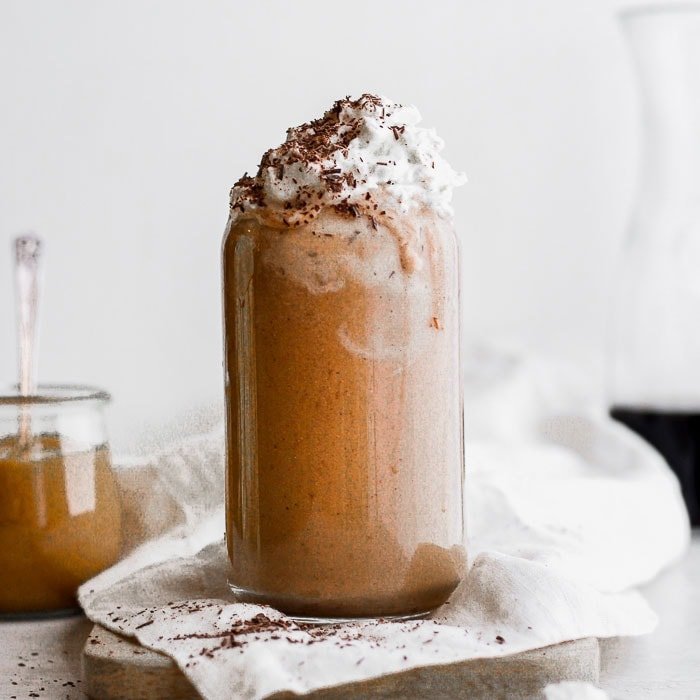 Start your day off right with this Peanut Butter Banana Cold Brew Protein Smoothie! If you love the peanut butter banana combination with an added boost of protein, then you will love this healthy breakfast smoothie! Add your favorite scoop of protein to this smoothie and you are set for ...
Start your day off right with this Peanut Butter Banana Cold Brew Protein Smoothie! If you love the peanut butter banana combination with an added boost of protein, then you will love this healthy breakfast smoothie! Add your favorite scoop of protein to this smoothie and you are set for ... Are bananas a staple for you when it comes to smoothies and baking? Me too! Check out this post on how to freeze bananas for an easy step by step tutorial on how to slice bananas and save them in the freezer for later. How to Freeze Bananas- It’s SO ...
Are bananas a staple for you when it comes to smoothies and baking? Me too! Check out this post on how to freeze bananas for an easy step by step tutorial on how to slice bananas and save them in the freezer for later. How to Freeze Bananas- It’s SO ...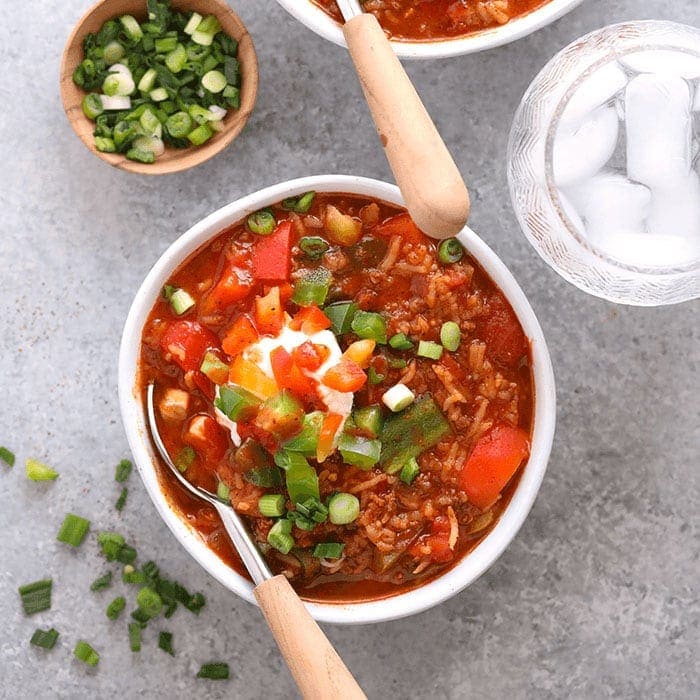 Get out your pressure cooker and make this Instant Pot Stuffed Pepper Soup. This one pot meal is easy to make and packed with flavor! You can make this stuffed pepper soup recipe for the entire week for an easy healthy lunch and/or dinner. We Love Instant Pot Soup Is ...
Get out your pressure cooker and make this Instant Pot Stuffed Pepper Soup. This one pot meal is easy to make and packed with flavor! You can make this stuffed pepper soup recipe for the entire week for an easy healthy lunch and/or dinner. We Love Instant Pot Soup Is ... Whip up this easy coconut flour mug cake for dessert in 90 seconds. This chocolate mug cake is paleo, grain-free, refined sugar-free, and can easily be keto! It’s mug cake time! If you’re a lover of dessert, but need a little portion control assistance, mug cakes need to be your ...
Whip up this easy coconut flour mug cake for dessert in 90 seconds. This chocolate mug cake is paleo, grain-free, refined sugar-free, and can easily be keto! It’s mug cake time! If you’re a lover of dessert, but need a little portion control assistance, mug cakes need to be your ... Need a quick, grab-and-go breakfast? Make these delicious freezer breakfast sandwiches! They’re made with a sausage, sun-dried tomato, and spinach egg patty, cheese, and a whole grain English muffin. So what are you waiting for? Whip up a batch of these make ahead breakfast sandwiches now! We’re biggggg breakfast fans ...
Need a quick, grab-and-go breakfast? Make these delicious freezer breakfast sandwiches! They’re made with a sausage, sun-dried tomato, and spinach egg patty, cheese, and a whole grain English muffin. So what are you waiting for? Whip up a batch of these make ahead breakfast sandwiches now! We’re biggggg breakfast fans ...